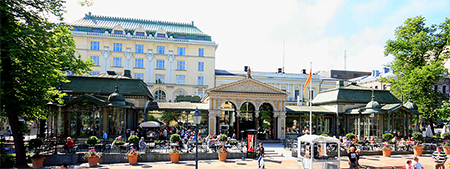Tourist information about Helsinki
Helsinki, capital of Finland, sits on the tip of a peninsula surrounded by 315 islets and is one of the fastest growing cities in Europe.
Swedes founded the city in 1550 but it was a coastal backwater until Russia established a sea fortress in 1809. Modern Helsinki emerged when Finland gained independence in 1917 and is one of Europe's most technologically creative capitals.
The central hub of Helsinki is around the bustling seafront with its cafes and market stalls. Notable landmarks are Finlandia Hall and the Kiasma gallery. A good way to see the sights is to hop on tram 3T which takes in most of the main attractions.

Northern sights
These include the Senaatintori or Senate Square, a neo-classical outlook that includes the white-domed Lutheran Tuomiokirkko Cathedral, the Government Palace and the University Library and the Kauppatori market square on the seafront.
Most of the nightlife is centrally located around Uudenmaankatu and Eerikinkatu and there is a casino near the railway station.
Other attractions are Temppeliaukio Church, built into solid rock, with the inner wall left unfinished, the Sibelius Monument with hundreds of steel pipes and the Kiasma Contemporary Art Museum, a building that is a work of art in itself.
Open air museums
The Kotiharju Sauna is the last wood-heated public sauna in the downtown area and the Linnanmäki Amusement Park has an aquarium with underwater tunnel walks.
The island of Seurasaari is an open-air museum, dotted with 18th and 19th-century houses with a museum devoted to the traditions of Finnish life. The Suomenlinna sea fortress, now a UNESCO World Heritage Site, is 1.5km off the coast. It was begun 1748 and includes a museum.
Helsinki has an integrated network of metro, trams and buses with ferries to Suomenlinna. As public transport is good and most of central Helsinki is accessible on foot, a car is not really needed.
Three main rail lines arrive from Turku in the west, Tampere in the north and Lahti in the north east, with services to St Petersburg and Moscow. The main road to Helsinki from Turku is the E18. Vaasa is reaches on the E12 and the north on the E75.
International coach options include destinations in Sweden, Norway, Russia and the Baltic countries. Helsinki-Vantaa International Airport is at Vantaa, 20km from the city with terminals for national and international traffic. There are direct flights from many major European cities and regular buses meet all flights.
